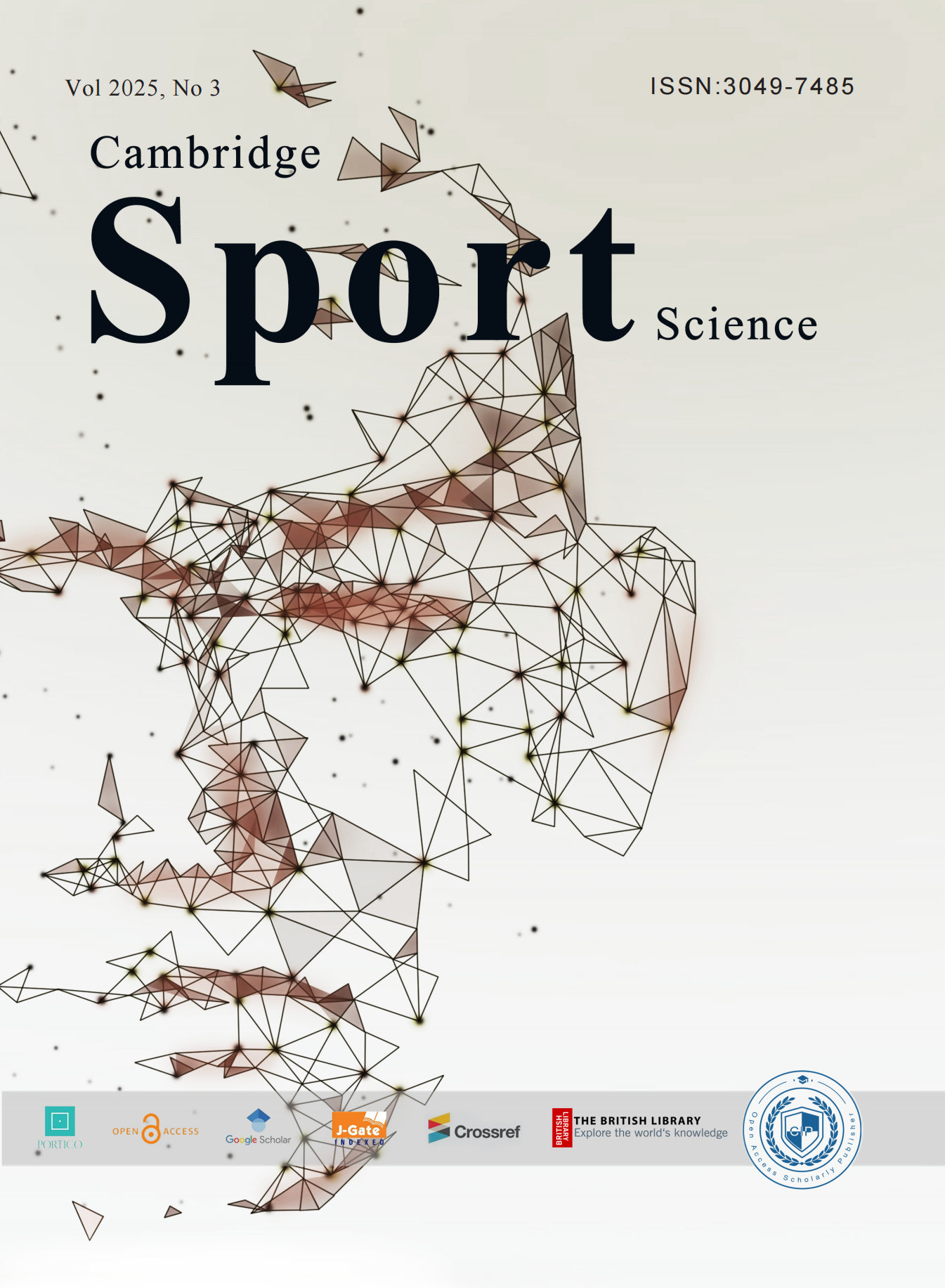The effects of exercise intensity on energy expenditure, weight, and lee's index in adolescent obese rats
Published 18-06-2025
Keywords
- Exercise intensity,
- Adolescent obesity,
- Immediate post-exercise energy expenditure,
- Body weight,
- Lee's Index
Copyright (c) 2025 Cambridge Sport Science

This work is licensed under a Creative Commons Attribution-NonCommercial 4.0 International License.
How to Cite
Abstract
Objective: To investigate the effects of different intensity exercise prescriptions on immediate energy expenditure, body weight, and Lee's Index in adolescent obese rats immediately after exercise during an 8-week weight loss process. Methods: After 7 weeks of modeling, 32 obese rats were randomly divided into 4 groups, with 8 rats in each group: obese control group, low-intensity exercise group, moderate-intensity exercise group, and high-intensity exercise group. The running speeds on the treadmill for the three intensity levels were set at 15–18 m/min, 21–25 m/min, and 28–32 m/min, respectively, with 5 sessions per week and 60 minutes per session for 8 weeks. Body weight was measured and Lee's Index was calculated weekly. A rat metabolic system was used to measure the immediate oxygen uptake and energy expenditure in rats after exercise. Results: During the 8-week intervention, the exercise groups showed significantly higher immediate post-exercise muscle oxygen uptake and total oxygen uptake, as well as muscle energy expenditure and total energy expenditure compared to the control group (P<0.05, P<0.01). The high-intensity group had higher values than the low-intensity group (P<0.05). Weight gain was significantly lower in the intervention groups compared to the control group (P<0.05, P<0.01). Lee's Index was significantly lower in the intervention groups at week 8 compared to the control group (P<0.05, P<0.01), with no significant differences between different exercise intensities (P>0.05). In adolescent obese rats, body weight tends to increase with age, while muscle oxygen uptake, total oxygen uptake, muscle energy expenditure, and total energy expenditure tend to decrease. After 8 weeks of exercise intervention, different intensity exercise prescriptions can increase immediate post-exercise oxygen uptake and energy expenditure in adolescent obese rats, with the most significant effects observed in the high-intensity group. Weight gain and Lee's Index were reduced, but the effects were less influenced by exercise intensity.
References
- Ma Guan sheng, Luan De Chun, Li Yanping, et al. Descriptive analysis of physical activity among Chinese residents [J]. Chinese Journal of Chronic Disease Prevention and Control, 2006, 14(1): 8–12.
- Wu Yang feng, Zhou Bei fan, Tao Shou qi, et al. Current status and development trend of overweight and obesity rates among middle-aged people in China [J]. Chinese Journal of Epidemiology, 2002, 23: 11–15.
- Mackay J, Mensah G A, Mendis S, et al. The atlas of heart disease and stroke [J]. Geneva: WHO, 2004: 5–6.
- Sun Jun, Bai You ping, Wang Ke, et al. Effects of weight loss exercise prescription on health-related fitness in overweight and obese students during late adolescence [J]. Journal of Anhui Normal University, 2012, 35(3): 287–292.
- Li Lei, Chen Wenhao. Research progress on obesity and exercise weight loss [J]. Journal of Shenyang Sport University, 2005(6): 72–74.
- Tobina T, Nakashima H, Kozako T, et al. Differences in high molecular weight adiponectin and adiponectin receptor alterations based on exercise and diet [J]. Medicine & Science in Sports & Exercise, 2010, 42(10): 46–47.
- Nagai N, Moritani T. Effect of physical activity on autonomic nervous system function in lean and obese children [J]. International Journal of Obesity, 2004, 28(1): 27–33.
- Cui Jian Fei, Bai You ping, Li Meng, et al. Effects of different exercise intensities on blood glucose, insulin sensitivity, and RBP4 in adolescent obese rats [J]. Journal of Hygiene Research, 2014, 43(4): 535–540.
- Bermardis L L, Patterson D B. Correlation between "Lee Index" and carcass fat content in weanling and adult female rats with hypothalamic lesions [J]. Journal of Endocrinology, 1968, 40: 527–528.
- Zhang Yong. Research progress on exercise and energy expenditure and substrate metabolic characteristics [J]. Chinese Journal of Sports Medicine, 2010, 29(6): 722–726.
- [11] Zhu Lin. Methodological study on energy expenditure of common physical activities in adolescents aged 11–14 [D]. Shanghai University of Sport, 2012.
- [12] Wang Jun, Wang Rui yuan, Tian Ji ming, et al. Discussion on new perspectives of high-intensity interval exercise for weight loss [J]. Journal of Guangzhou Sport University, 2007, 27(1): 99–101.
- [13] Ma Chun Lian. Understanding and discussion of new perspectives on exercise weight loss [J]. Sports Research and Education, 2012, 27(6): 120–123.
- [14] Dai Yuanyuan. Effects of different exercise intensities and CLA on Vaspin in adolescent obese rats [D]. Anhui Normal University, 2014.
- [15] Huang Xu gen, Feng Lian Shi, Xu Jian fang, et al. Changes in body weight and energy metabolism of rats during hypoxic training [J]. Sports Science, 2007, 27(10): 61–68.
- [16] Bai You ping, Zhang Jing, Jiang Shuang Shuang, et al. Effects of weight loss exercise prescription on body fat, blood glucose, and resistin in overweight and obese college students [J]. Journal of Hygiene Research, 2013, 4(42): 538–549.
- [17] Bai You ping, Xu Xiaodong, Sun Jun, et al. Effects of weight loss exercise prescription on waist-to-hip ratio and plasma visfatin and adiponectin in overweight and obese college students [J]. Journal of Chengdu Sport University, 2013, 10(39): 80–85.
- [18] He Ming, Tu Changchun. Discussion on the use of Lee's Index to evaluate obesity in adult rats [J]. Chinese Journal of Clinical Pharmacology and Therapeutics, 1997, 2(3): 177–179.

